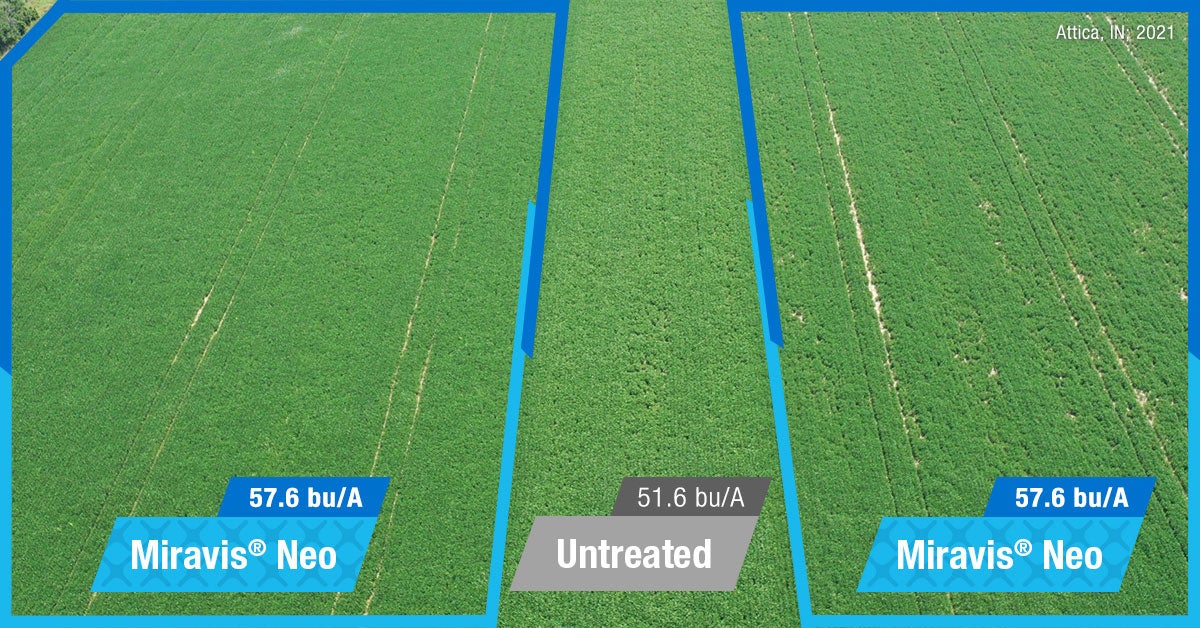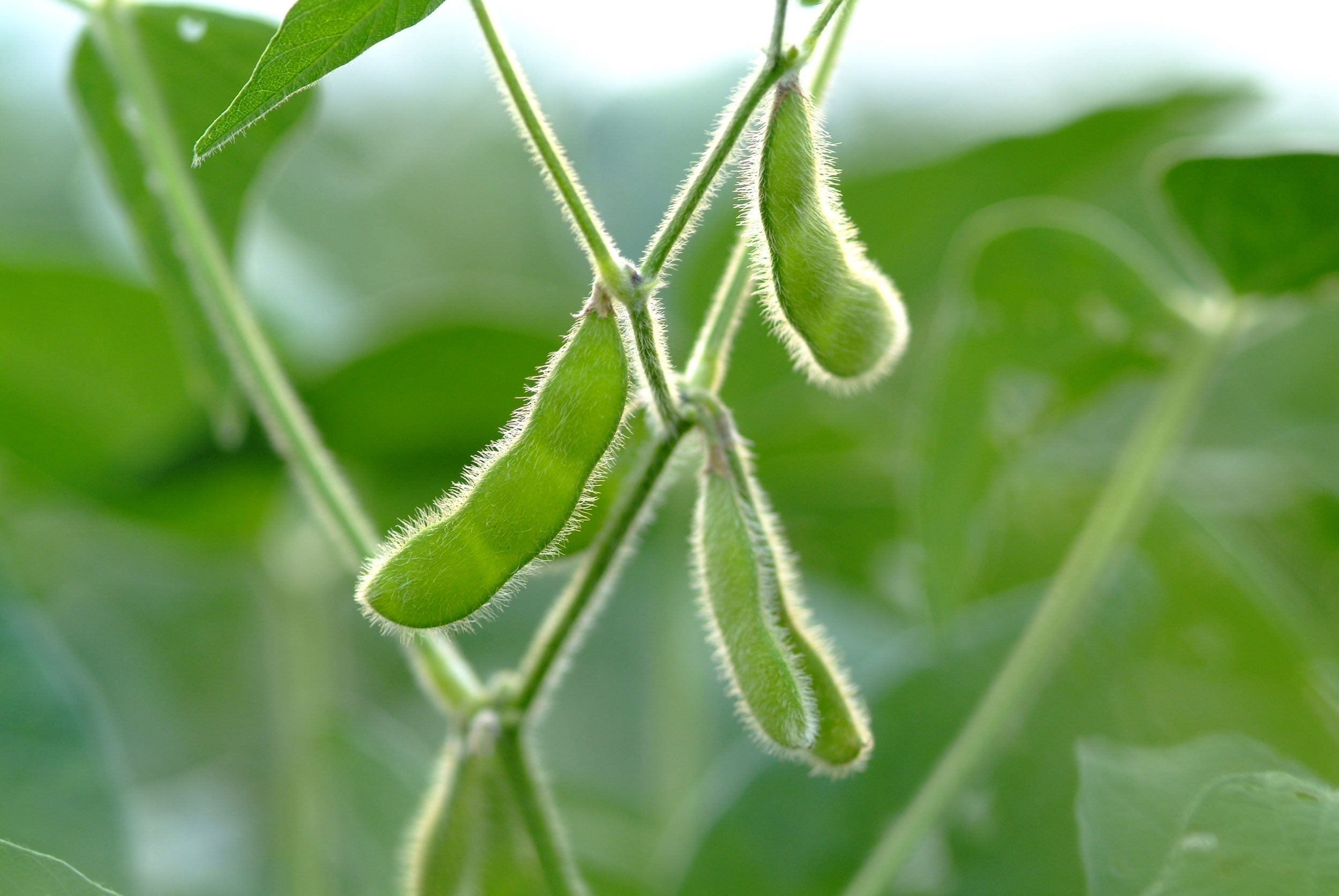Delivering a product like Miravis Neo fungicide to growers doesn’t come cheap or easy, but the payoff with plant health and protection is worth it.
In the world of modern agricultural science, nothing happens by accident. Extensive data-driven research propels the processes and products that ultimately get distributed to American growers.
No area is more representative of this fact than the delivery of advanced crop protection solutions, such as herbicides and fungicides, which are meticulously vetted and tested to protect and optimize yield, be environmentally sustainable, and support a positive return on investment.
From the discovery of a new active ingredient to field profiling and formulation testing and then onward to formal U.S. EPA registration, these complex crop protection products often take 10 to 15 years to become commercially available.
“It has become more expensive and has increasingly taken longer over the past five years than it ever has before to bring these products to market,” said Tyler Harp, technical product lead for row crop fungicides at Syngenta. He’s been with the company for 25 years and added that the process is more complicated than ever to ensure chemistries are as effective as possible to use on U.S. farmland.
He estimates that the newest Syngenta products end up costing over $300 million to create and register. Market research firm Phillips McDougall says that the crop protection industry as a whole has seen this average increase 55% since the turn of the century.


Scientists use high-throughput screening to assess large samples of molecules for a specific biological activity and then perform molecular modeling to gauge their structure, activity and relationship to other molecules, such as binding to an enzyme. What may start as an analysis of 100,000 compounds is then whittled down to 5,000 that may actually get profiled. From there, maybe 30 are evaluated before the single compound is launched.
Trends show that these kinds of discoveries peaked in the late 1980s and into the ’90s, but since the year 2000, there has been a steady decline in the number of new active ingredients that have reached registration.
“It’s becoming harder and harder for us to find targets that we know will have a good regulatory profile,” Harp said.
This makes it all the more exciting for someone like Harp to work with something as innovative as Miravis® Neo fungicide, which Syngenta released in 2018 and was part of a next-gen portfolio of products that focused as heavily on plant health as it did on disease control.


The enhanced plant-health benefits in Miravis Neo come from ADEPIDYN® technology, which is a high-performing carboxamide succinate dehydrogenase inhibitor (SDHI) that is effective against early fungal disease infection while also promoting improved green leaf area and management of light energy, water, and nutrients in corn and soybean plants.
The technology works by inhibiting the activity of an enzyme that is essential for fungal respiration, starving the fungi from the energy they need to survive. It is designed to adhere to the plant surface and to penetrate rapidly through the leaf surface — creating a reservoir of active ingredient in the waxy layer of the plant tissue that enables even distribution and long-lasting protection as the plant grows.
Paired with both triazole and strobilurin chemistries, ADEPIDYN broadens the spectrum of preventive and curative disease control that a grower gets and extends the field’s residual capabilities, all while setting the crop up for optimum grain/pod fill during development and yield potential in the fall.
“It’s a stress mitigation tool and protects my overall ROI,” said Brad Gerten, a grower in Putnam County, Ohio, who incorporates Miravis Neo into his 2,500-acre operation. “It mitigates so many potential issues down the road.”
Thanks to these elements, growers who compared untreated acres to Miravis Neo in 2024 saw an average yield increase of 5 bu/A in soybeans1 and 16 bu/A in corn2.


Gerten said that Miravis Neo has worked exceedingly well for him both in wet conditions, when pressure from diseases like Northern corn leaf blight and gray leaf spot can become more threatening, and in dry conditions when the ADEPIDYN technology helps to reduce the transpiration rate (the loss of water vapor) in leaves, keeping the plant healthier for longer.
This illustrates both sides of the approach that Syngenta has dubbed “Cleaner & Greener” in its fungicide product lineup.
In the disease-protection range, the demethylation inhibitor (DMI) mode of action in Propiconazole can stop any active disease that began before the application. Meanwhile, the quinone outside inhibitor (QoI) mode of action in the Azoxystrobin and SDHI mode of action in ADEPIDYN are preventive in nature. The longer duration of that prevention can even inhibit infections that try to show up later in the season.
Harp said that while older chemistries without the SDHI would last about 21 days, Miravis Neo creates a reservoir within the wax layer of the leaf that withstands rain and degradation, giving it effective control for roughly two additional weeks or more.
Even so, the exact window of protection depends on several factors, not the least of which is Mother Nature.
“Residual activity of any fungicide depends on the environmental conditions, the temperature, and the disease pressure,” he said. “It also depends on the hybrid it’s being applied to — some hybrids metabolize fungicides more quickly than others. So, there are a lot of factors, but we know that the SDHI chemistry is more persistent or longer-lasting in the plant, especially compared to products without that chemistry.”


Gerten, the Ohio grower who also works as a field sales agronomist, said when he considered adopting Miravis Neo, he did a test on a 78-acre field on his farm to measure the hybrid response to different products. He planted his hybrids east to west and used a drone to spray eight different fungicides north to south, an approach that allowed him to see how the various products interacted with each of the hybrid seed types.
“Miravis Neo definitely stood above everything else,” he said. “Obviously it keeps the diseases at bay and suppresses some other ones, but we’re really seeing the stress mitigation. We’re seeing the plant able to reach its full capacity, versus trying to play catchup like we did with previous products where disease had already started in the leaf tissue.”
The following year, Gerten expanded his disease management program and pulled in 16.8 bu/A greater yield using Miravis Neo in corn compared with his untreated acreage. In soybeans, he regularly gets 3.5 to 4 bu/A improvements versus untreated, and has once been as high as 6 bu/A.
“It’s made paying the bills at the end of the year easier as we’ve held onto some of those yields,” he added.
Harp noted that testing has shown that 80% of the time (four out of five years), the application of Miravis Neo is profitable — and sometimes, it’s really profitable.
“No matter how we cut the data, this is always what it tells us: One of those four years is going to be a hit-it-out-of-the-park 20 bushel per acre or more return in corn and 10 bushel per acre or more in soybean,” Harp said. “And that would be enough to pay for all five years of your fungicide.”
Class is in Session — See more articles in this fungicide series here:
This article was funded by and published on behalf of Syngenta. Explore Boost Your Bushels to learn more about Miravis Neo. Visit this page to find a Syngenta Crop Protection Specialist near you.
Ryan Tipps is the founder and managing editor of AGDAILY. The Indiana native has a master’s degree in Agriculture and Life Sciences from Virginia Tech and has covered the food and farming industries at the state and national levels since 2011.
1Trial Information: On-farm grower/strip trials: Locations: IA (2), IL (1), IN (1), MI (1), NE (1), SD (1), WI (1). Plot Size: Strip Trials, Replications: Non-replicated. Application Rates: Miravis Neo fungicide at 13.7 fl oz/A applied at R2-R3 soybean.
2Trial Information: On-farm grower/strip trials. Locations: IL, IN, IA, KS, MI, NE, NY, OH, WI. Plot Size: Strip Trials, Replications: Non-replicated. Application Rates: Miravis Neo at 13.7 fl oz/A applied at VT-R2 corn.
All photos are either the property of Syngenta or are used with permission.
Product performance assumes disease presence.
Performance assessments are based upon results or analysis of public information, field observations and/or internal Syngenta evaluations.
No claim is being made herein about the environmental attributes of any product. References to “cleaner and greener” indicate plant-health benefits (e.g., less disease and increased crop efficiency and productivity) from foliar fungicides and the visible color of the plants.
© 2025 Syngenta. Important: Always read and follow label instructions. Some products may not be registered for sale or use in all states or counties. Please check with your local extension service to ensure registration status. ADEPIDYN®, Miravis® and the Syngenta logo are trademarks of a Syngenta Group Company.